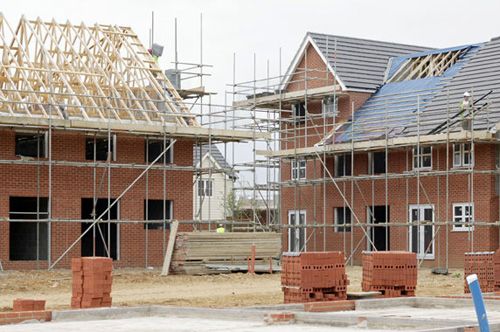 New figures from the Home Builders Federation (HBF) and Glenigan have shown that the number of new homes with planning permission has reached 200,000.
New figures from the Home Builders Federation (HBF) and Glenigan have shown that the number of new homes with planning permission has reached 200,000.
According to the latest Housing Pipeline report, planning permissions for 52,167 homes were granted in England during the first quarter of this year, a 19% increase on the 43,926 permissions in the corresponding quarter last year. As a result, 203,810 permissions were granted in the 12 months to April. HBF says this is the highest ‘four quarter’ total since early 2008, with the number of permissions granted in Q1 being twice that in the corresponding quarter in both 2011 and 2012.
The report also only measures permissions on site over ten units, suggesting the actual figure could be higher.
House-building levels have been historically low over recent years, with both the Coalition and preceding Labour Governments failing to build enough homes. These latest figures have been welcomed by the HBF as a sign that residential construction could soon reach the levels needed, however the organisation says more needs to be done to continue the momentum.
According to the HBF, many of the homes identified in its report still have to go through the rest of the planning system, a process that has been criticised for taking far too long and delaying work starting on many of the sites. Since the introduction of the Help to Buy Equity Loan scheme in 2013, housing output has increased significantly. The planning process, however, remains a significant constraint on the industry’s ability to meet the higher levels of demand and deliver further increases in supply.
Stewart Baseley, executive chairman of the HBF, said: “Since the Help to Buy scheme was introduced in 2013 house-building activity has increased strongly. Private housing starts in 2014 were up nearly 40% on their pre-Help to Buy level in 2012. However we are still only building around half the number of new homes the country needs, and far fewer than in previous decades.
“One of the biggest constraints on the industry’s ability to meet the new level of demand and deliver further sustained increases in build rates is the planning process. How quickly we get more sites to the point where we can actually start to lay bricks will be a major influence on future house-building levels.
The HBF hopes measures announced by Government earlier this month as part of its Productivity Plan will help to both speed up the planning process and deliver further increases in the number of permissions being granted. These measures include giving automatic planning approval to homes on brownfield land; ensuring local councils have local plans in place for housing; and releasing public and commercial land for housing.
While the Government’s readiness to act on the housing crisis has been welcomed, there has been criticism of its methods, which are focused on ensuring more sites receive planning permission. With the Moving Annual Total reaching 200,000 homes, the HBF and Glenigan report suggests gaining permission is not the difficulty for many homes waiting to be built.



